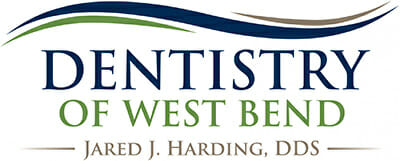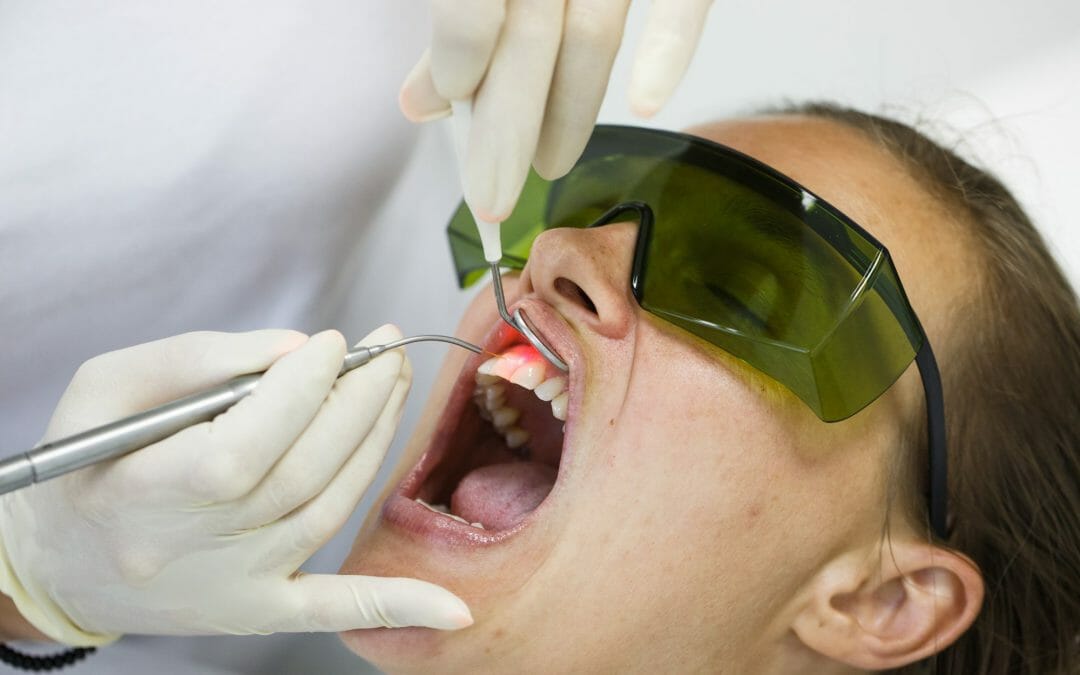Laser therapy for gum disease is a revolutionary treatment designed to address more advanced cases of periodontal disease (gum disease). Laser therapy uses lasers set to specific wavelengths to sterilize harmful bacteria while removing gum tissue that is either dead or diseased. The purpose of this treatment is to kill harmful bacteria and eliminate infection while giving the gums a chance to heal, regenerate, and tighten back up around the teeth.
Laser therapy for periodontal disease treatment offers patients several benefits over traditional, surgical gum disease treatment that uses a scalpel and incisions. These benefits include a reduced risk of infection, less bleeding and swelling, increased comfort, a shorter recovery time, and no need for general anesthesia. Despite these benefits, laser gum therapy is still a form of surgery and requires a period of rest and recovery following treatment.
What Happens After Periodontal Disease Treatment With Laser Gum Therapy?
While laser gum therapy offers a shorter recovery time and a significantly reduced risk of complications, patients must still undergo a recovery period during which they receive aftercare instructions and follow-up dental examinations to track the patient’s healing progress and assess the patient’s periodontal disease status.
What to Expect After Laser Gum Therapy: Possible Symptoms
Some patients feel normal the day after surgery and are ready to resume all of their usual activities. Other patients require a few days to return to feeling normal.
Most patients experience some of the following symptoms for several days after treatment:
- Mild soreness
- Tooth sensitivity
- Slight swelling
- Minor bleeding
- Gum discoloration
Any pain or discomfort should be adequately addressed with over-the-counter anti-inflammatory medications. If you experience more severe pain, discomfort, swelling, or other symptoms, this could be an indication of complications and we would urge you to contact our office right away.
Laser Gum Therapy Aftercare Instructions
Each patient’s aftercare instructions are individually tailored to meet their unique healing needs. However, in general, aftercare instructions include the following:
- Not brushing or flossing around the treatment area
- Rinsing with warm salt water every few hours for relief
- Rinsing with a prescription mouthwash
- Not rinsing or spitting vigorously, but letting the salt water or mouthwash rest in the mouth before allowing it to gently run out
- Eating a soft diet, avoiding hard, scratchy, crunchy, or chewy foods
- Avoiding overly hot (temperature) or spicy foods and beverages
- Not using any tobacco products
Keep in mind that, depending on your procedure and medical health history, your instructions might vary slightly from the aftercare guidelines listed above.
Signs of Potential Complications
The heat of the laser used in laser gum therapy effectively sterilizes the treatment area which means that complications, such as bacterial infections, are quite rare. However, they are not entirely impossible – especially if the treatment area becomes damaged or irritated during the recovery period.
Signs of a bacterial infection include:
- Pus
- Oozing
- Swelling
- Worsening pain
- Fever
Bacterial infections of the oral structures can be quite dangerous if left unaddressed. To be adequately treated and prevent further complications from developing, infections must be treated with antibiotics. If you experience any of the signs or symptoms of an infection, contact our office right away.
How Long Does It Take to Recover From Laser Gum Therapy?
The recovery period for periodontal disease treatment with laser gum therapy is always shorter than the recovery period associated with surgical periodontal disease treatment. The length of this period, however, largely depends on the individual patient, their medical history, the extent of the laser therapy treatment needed, and their willingness to adhere to aftercare instructions. On average, the healing time for laser gum therapy lasts about a week.
Ongoing Preventive Dental Care and Periodontal Disease Treatment
While laser gum therapy can resolve periodontal disease, it is not always 100% effective. While it will greatly improve your oral health outlook, you might still require ongoing maintenance treatments with scaling and root planing, more frequent professional dental cleanings, and/or prescription antibiotic mouth rinses or trays.
Once your healing period is complete, we will schedule an aftercare follow-up appointment with you to examine your teeth and gums and evaluate your periodontal disease status to recommend an ongoing treatment plan to manage your periodontal disease and prevent it from worsening in the future.
In addition to in-office care, this treatment plan will also include steps for you to take at home including maintaining good oral hygiene practices in between appointments. This includes:
- Brushing your teeth for two minutes twice a day
- Flossing at least once a day with dental floss, a water flosser, or another type of interdental cleaning tool
- Rinsing with alcohol-free, antibacterial mouthwash or prescription mouthwash
- Using your prescription dental trays as prescribed
Keeping up with your ongoing professional, preventive dental care and at-home oral hygiene routine will help preserve the positive effects of your laser gum therapy treatment.
Laser Gum Therapy for Periodontal Disease in West Bend
At Dentistry of West Bend, our entire team is highly committed to helping our patients prevent and manage periodontal disease in order to protect and preserve not only their oral health but also their general health and wellness. We have a wide range of periodontal disease treatments available and work individually with each patient to recommend an appropriate treatment plan based on their individual case of gum disease, treatment goals, and medical history.
To learn more about laser gum therapy for periodontal disease or to schedule a consultation with Dr. Jared Harding, we welcome you to contact our dental office in West Bend, Wisconsin today.


Recent Comments